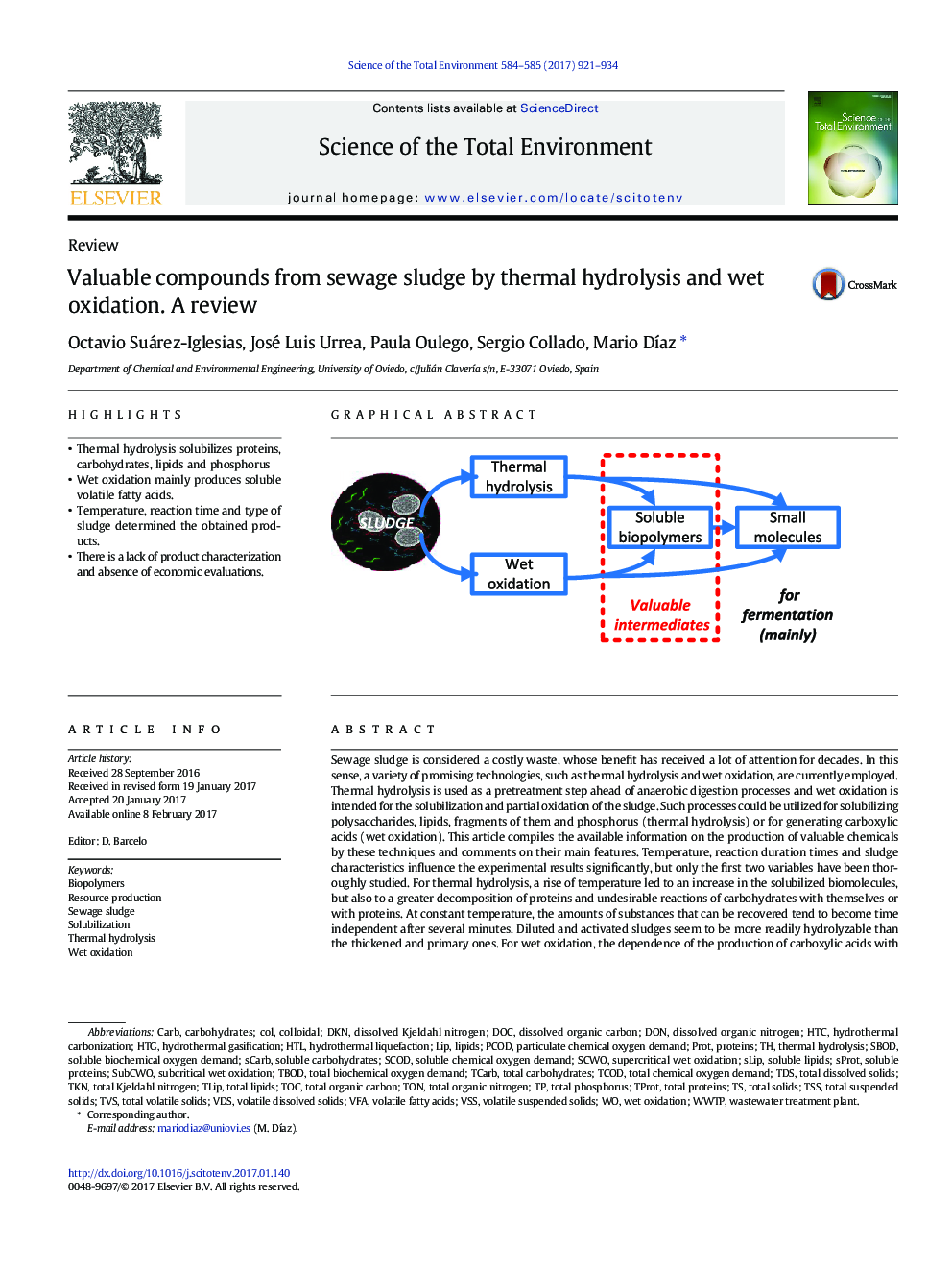| Article ID | Journal | Published Year | Pages | File Type |
|---|---|---|---|---|
| 5751931 | Science of The Total Environment | 2017 | 14 Pages |
â¢Thermal hydrolysis solubilizes proteins, carbohydrates, lipids and phosphorusâ¢Wet oxidation mainly produces soluble volatile fatty acids.â¢Temperature, reaction time and type of sludge determined the obtained products.â¢There is a lack of product characterization and absence of economic evaluations.
Sewage sludge is considered a costly waste, whose benefit has received a lot of attention for decades. In this sense, a variety of promising technologies, such as thermal hydrolysis and wet oxidation, are currently employed. Thermal hydrolysis is used as a pretreatment step ahead of anaerobic digestion processes and wet oxidation is intended for the solubilization and partial oxidation of the sludge. Such processes could be utilized for solubilizing polysaccharides, lipids, fragments of them and phosphorus (thermal hydrolysis) or for generating carboxylic acids (wet oxidation). This article compiles the available information on the production of valuable chemicals by these techniques and comments on their main features. Temperature, reaction duration times and sludge characteristics influence the experimental results significantly, but only the first two variables have been thoroughly studied. For thermal hydrolysis, a rise of temperature led to an increase in the solubilized biomolecules, but also to a greater decomposition of proteins and undesirable reactions of carbohydrates with themselves or with proteins. At constant temperature, the amounts of substances that can be recovered tend to become time independent after several minutes. Diluted and activated sludges seem to be more readily hydrolyzable than the thickened and primary ones. For wet oxidation, the dependence of the production of carboxylic acids with temperature and time is not simple: their concentration can increase, decrease or go through a maximum. At high temperatures, acetic acid is the main carboxylic acid obtained. Concentrated, fermented and secondary sludge seem to be more suitable for yielding higher amounts of acid than diluted, undigested and primary ones.
Graphical abstractDownload high-res image (279KB)Download full-size image
